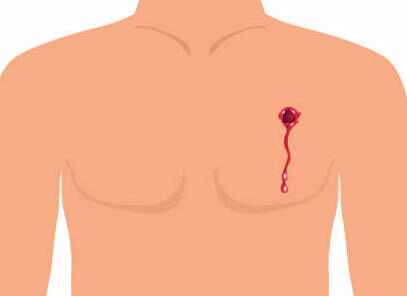Gunshot Injuries
A gun shot injury is a type of trauma that occurs when a person is shot with a firearm. These injuries can be very serious and can lead to significant physical harm or death.
If you or someone you know has been shot, it is important to seek medical attention as soon as possible. If the injury is severe, call 911 or go to the nearest hospital emergency room. If the injury is not severe, you can still seek medical attention at a hospital or with a healthcare provider. The damage depends on the part of body hit, the path the bullet follows through the body, and the type and speed of the bullet.

At Anew , we provide advanced wound care for those patients with difficult-to-heal and/or non healing wounds. Our Center is staffed by multidisciplinary team of clinicians with advance training in woundcare. Our approach to wound care is aggressive and comprehensive, coordinating traditional and advanced therapies that aid and accelerate the healing process.
Treatment for a gun shot injury will depend on the location and severity of the injury. In general, treatment may include:
- Emergency surgery to repair or remove damaged tissue or organs
- Blood transfusions or other medications to stabilize the patient
- Physical therapy or rehabilitation to help the patient regain strength and mobility
- Pain management to help the patient cope with any ongoing pain
It is important to follow the treatment plan recommended by the healthcare team in order to make a full recovery. The first 10 minutes after the injury are often referred to as the Platinum 10 minutes
During this time, the person who was shot is at risk of life threatening complications, such as:
- airway obstruction
- tension pneumothorax (collapsed lung)
- bleeding
Get to safety and call 911
If you’re with somebody who has been shot, it’s crucial that you and the person get to a safe place away from the threat. It is also important to get support from friends, family, and mental health professionals to help cope with the physical and emotional effects of the injury.
In the case of an accidental shooting, this might mean making sure the gun’s safety is on and that the gun is secured. In the case of an intentional shooting, this might mean evacuating the scene.
Wound Care has been expanded.
If the wound was severe, you may have had surgery to:
- Stop bleeding
- Clean the wound
- Find and remove pieces of broken or shattered bone
- Place drains or tubes for body fluids
- Remove portions of, or whole, organs
Gunshot wounds that pass through the body without hitting major organs, blood vessels, or bone tend to cause less damage.
You may have bullet pieces that remain in your body. Often these cannot be removed without causing more damage. Scar tissue will form around these remaining pieces, which may cause ongoing pain or other discomfort.
You may have an open wound or a closed wound, depending on your injury. Your health care provider will tell you how to change your dressing and care for your wound. Keep these tips in mind:
- Keep the dressing and area around it clean and dry.
- Take any antibiotics or pain relievers as directed. Gunshot wounds can get infected because material and debris can get pulled into the wound with the bullet.
- Try to elevate the wound so it is above your heart. This helps reduce swelling. You may need to do this while sitting or lying down. You can use pillows to prop up the area.
- If your provider says it is OK, you may use an ice pack on the bandage to help with swelling. Ask how often you should apply the ice. Be sure to keep the bandage dry.
Your provider may change your dressing for you at first. Once you get the OK to change the dressing yourself:
- Follow instructions on how to clean and dry the wound.
- Be sure to wash your hands after removing an old dressing and before cleaning the wound.
- Wash your hands again after cleaning the wound and applying the new dressing.
- Do not use skin cleansers, alcohol, peroxide, iodine, or soaps with antibacterial chemicals on the wound unless your provider tells you to. These can damage the wound tissue and slow your healing.
- Do not put any lotion, cream, or herbal remedies on or around your wound without asking your provider first.
If you have non-dissolvable stitches or staples, your provider will remove them within 3 to 21 days. Do not pull at your stitches or try to remove them on your own.
